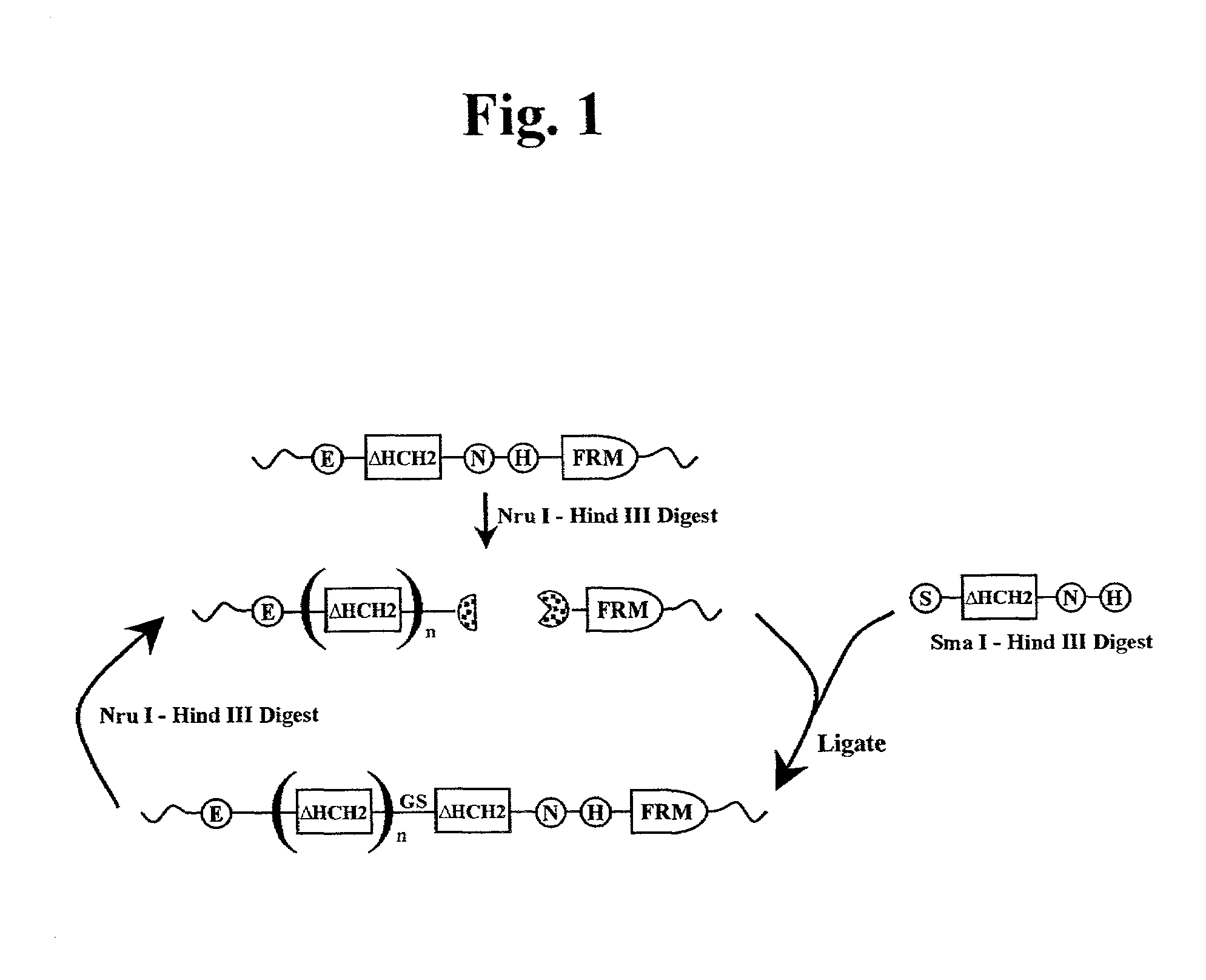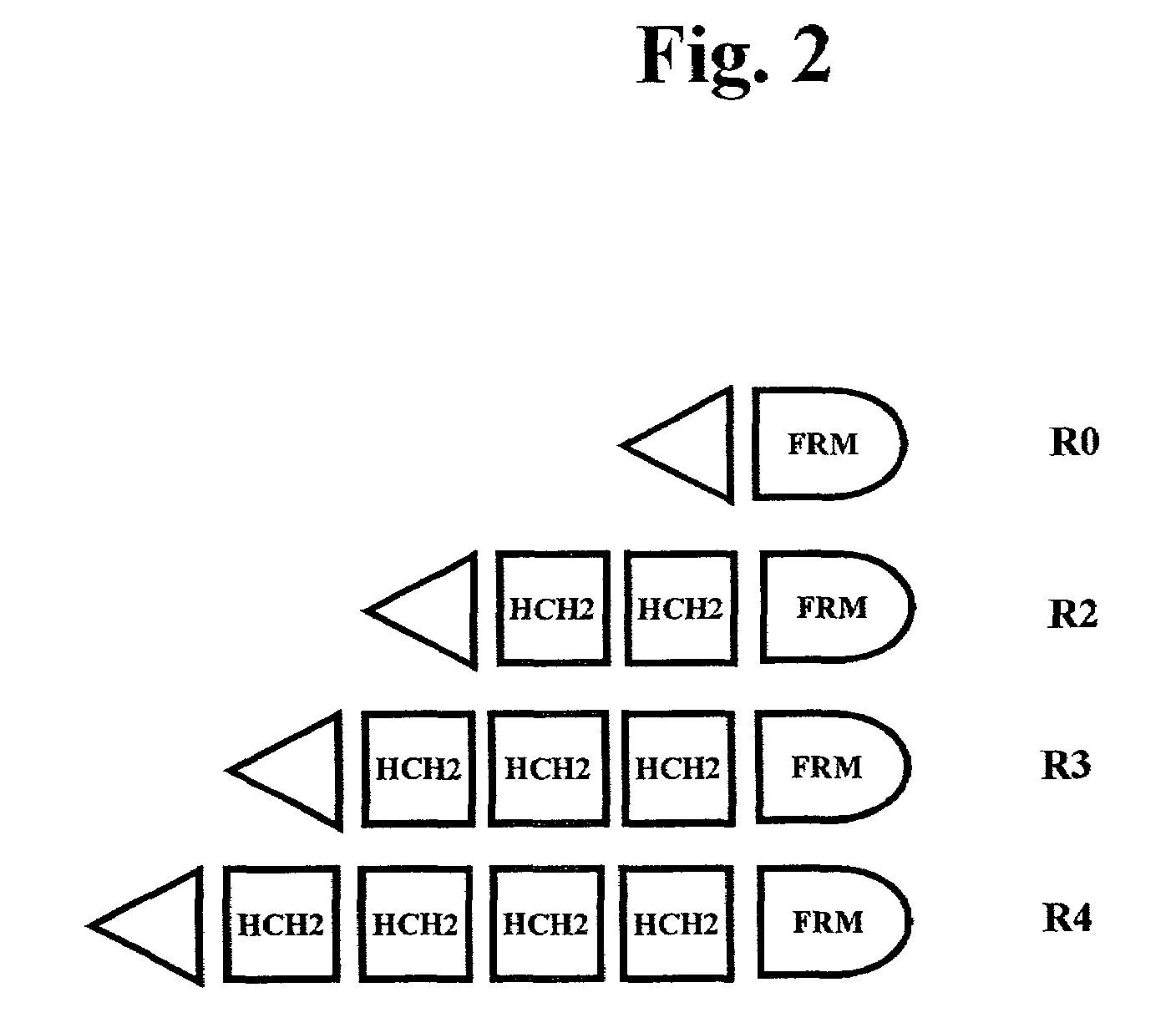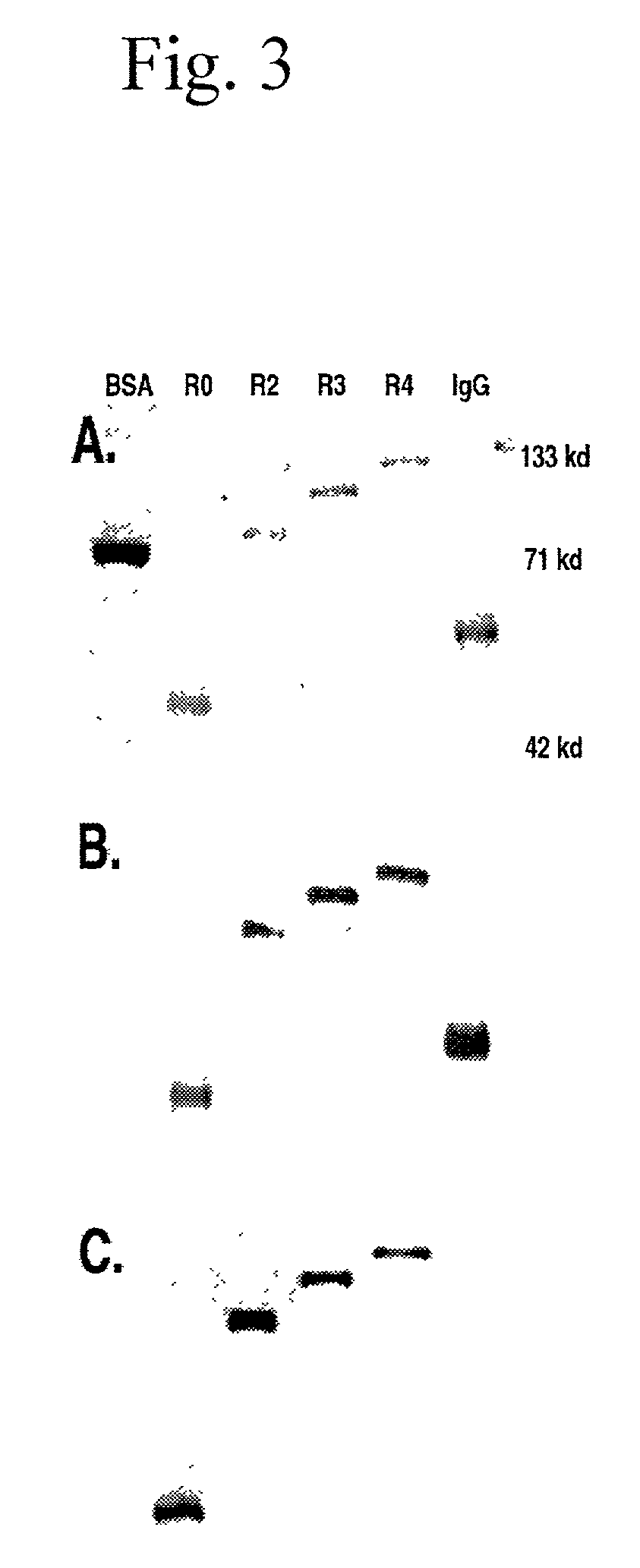Polymeric immunoglobulin fusion proteins that target low-affinity Fcγreceptors
a technology of polymer immunoglobulin and fusion proteins, applied in the field of immunology, can solve the problems of igg and fc, limited reproducibility, and major limitations of aggregated igg, and achieve the effects of reducing igg and fc, facilitating fusion, and facilitating fusion
- Summary
- Abstract
- Description
- Claims
- Application Information
AI Technical Summary
Benefits of technology
Problems solved by technology
Method used
Image
Examples
example 1
Framework Vector
[0329]The framework region of human IgG1 comprised of H-CH2-CH3 was isolated from total RNA from cell line ARH-77 and subcloned using RT-PCR, a primer, FRM-5p-H3, that introduced a HindIII site immediately 5′ of the hinge region and a second primer, FRM-3p-Sal, which introduced a SalI site immediately 3′ of the stop codon (Table 5). Clone pFRM-HS was characterized by DNA sequencing and used for further expression construct assembly. Primers for this and subsequent steps involving IgG1 cloning were designed using sequence data from the human IgG1 constant region gene as a guide (accession #Z17370).
[0330]
TABLE 5Sequence of Primers used for PCR AmplificationNameSequenceSeq ID No.FRM-5P-H3GgccgctaAAGCTTGAGCCCAAATCTT1GTGACAAAACTCFRM-3P-SalGgccgctaGTCGACTCATTTACCCGGAG2ACAGGGAGAGHinge1CccgtaGAATTCGAGCCCAAATCTTCT3GACAAAACTCACACATCCCCACCGTCCCCACH2NH3GgccgcatAAGCTTggagccTCGCGATTT4GGCTTTGGAGATGGTTTTCTCSMA-DELHGgccgcatCCCGGGGAGCCCAAATCTT5CTGACAAAACTCH2H3GgccgcatAAGCTTTTTGGCTTTGG...
example 2
Hinge Mutagenesis and CH2 Subcloning
[0331]The FcγR binding region of Fc, composed of the hinge and CH2 domains (HCH2), was isolated as a separate monomer unit. The hinge region within the HCH2 monomer unit was modified using PCR mutagenesis to change the three cysteines that form inter-chain disulfide bridges between Fc units to serines. The FcγR binding domain was amplified using a 5′ primer, Hinge1 (Table 5), which introduced single nucleotide changes in each of the three hinge cysteine codons resulting in their alteration to serine residues. The 5′ primer also introduced an EcoRI site immediately 5′ of the hinge region. The 3′ primer, CH2NH3 (Table 5), directed the amplification of the CH2 domain and introduced an in-frame 3′ NruI site separated by a 6 nucleotide spacer from a HindIII site. The PCR product was digested with EcoRI and HindIII and cloned into vector pBSKS+. The construct, composed of 5′ EcoRI-HCH2-NruI-HindIII 3′, is termed “ENH” to denote the sequence of restricti...
example 3
Polymer Construction
[0333]Polymers composed of HCH2 units were built using the scheme presented in FIG. 1. The HCH2 polymers were constructed by the sequential addition of a single starting unit (ENH), multiple extension units (SNH), and ended by addition of a single capping unit (SH3). Clone pENH18 was digested with NruI and HindIII resulting in a 5′ blunt end and a 3′ sticky end. Next a SNH insert, digested as described above, was ligated into the linearized vector resulting in the in-frame insertion of a HCH2 repeat unit at the 3′ end of the pENH18 starting unit. The insertion also regenerated the original sequence of restriction sites (NruI-spacer-HindIII) which were used in the next round of extension. The extension process continued with NruI and HindIII digestion followed by ligation with the next SNH insert as described above. This cycle of digestion and insertion was repeated as needed to generate the linear polymers. In the final round of polymer construction a ‘capping’ u...
PUM
| Property | Measurement | Unit |
|---|---|---|
| concentrations | aaaaa | aaaaa |
| concentration | aaaaa | aaaaa |
| time | aaaaa | aaaaa |
Abstract
Description
Claims
Application Information
 Login to View More
Login to View More - R&D
- Intellectual Property
- Life Sciences
- Materials
- Tech Scout
- Unparalleled Data Quality
- Higher Quality Content
- 60% Fewer Hallucinations
Browse by: Latest US Patents, China's latest patents, Technical Efficacy Thesaurus, Application Domain, Technology Topic, Popular Technical Reports.
© 2025 PatSnap. All rights reserved.Legal|Privacy policy|Modern Slavery Act Transparency Statement|Sitemap|About US| Contact US: help@patsnap.com



